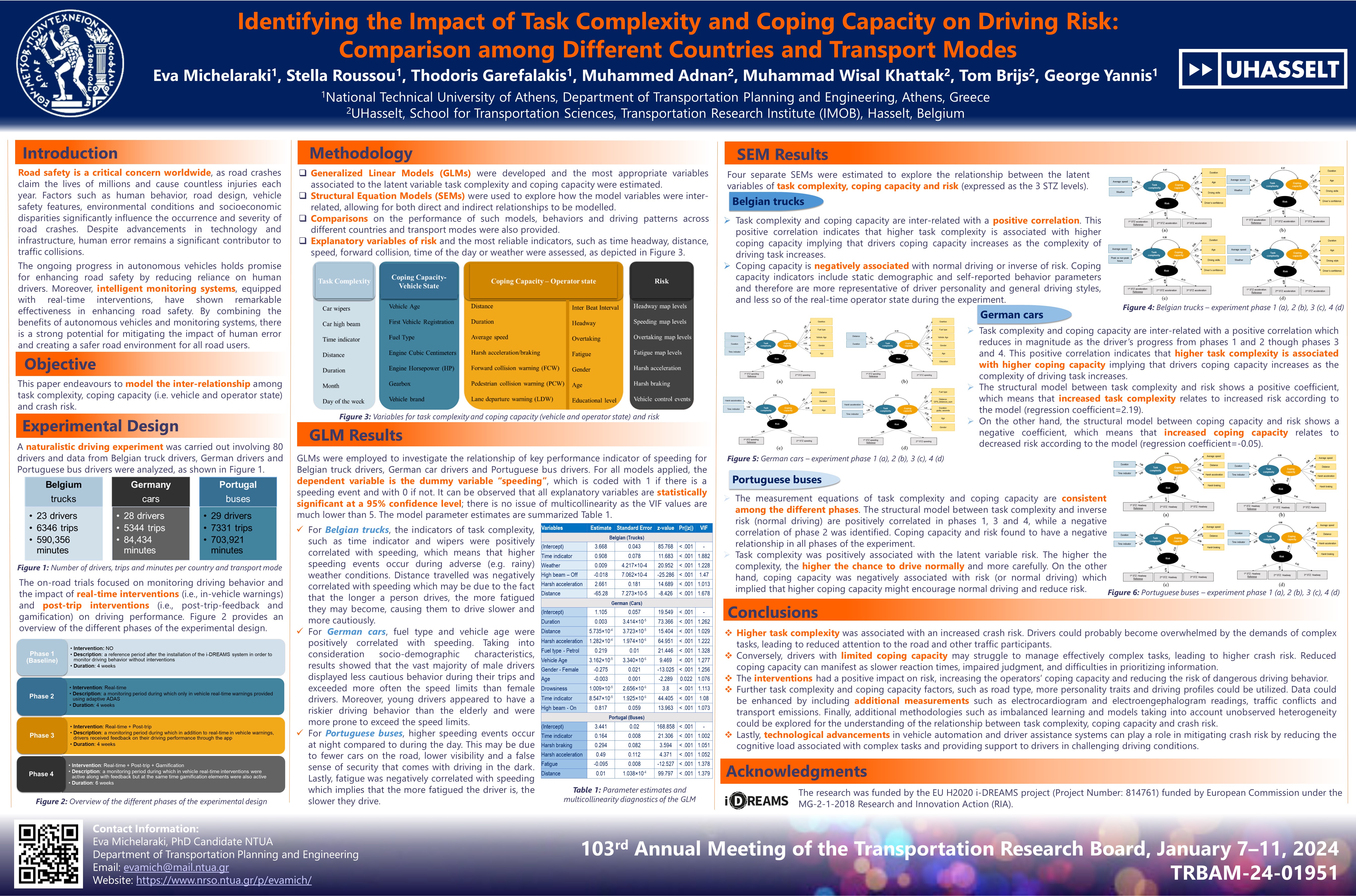
Considering the significant influence of the human factor on safe driving behavior, the i-DREAMS project developed a ‘Safety Tolerance Zone (STZ)’ to define the precise boundary where self-regulated control can be maintained safely. This paper endeavors to model the inter-relationship among task complexity, coping capacity (i.e. vehicle and operator state) and crash risk. Towards that aim, 80 drivers participated in a naturalistic driving experiment carried out in three countries (i.e. Belgium, Germany and Portugal) and a large dataset of 19,000 trips was collected and analyzed. Exploratory analysis, such as Generalized Linear Models (GLMs) were developed and the most appropriate variables associated to the latent variable “task complexity” and “coping capacity” were estimated from the various indicators. In addition, Structural Equation Models (SEMs) were used to explore how the model variables were inter-related, allowing for both direct and indirect relationships to be modelled. Comparisons on the performance of such models, behaviors and driving patterns across different countries and transport modes were also provided. Results showed positive correlation of task complexity and coping capacity that implies that driver’s coping capacity increased as the complexity of driving task increases. The integrated treatment of task complexity, coping capacity and risk can improve behavior and safety of all travellers, through the unobtrusive and seamless monitoring of behavior. Thus, authorities may use data systems at population level to plan mobility and safety interventions, set up road user incentives, optimize enforcement and enhance community building on safe traveling.
| ID | pc524 |
| Presentation | |
| Full Text | |
| Tags |













